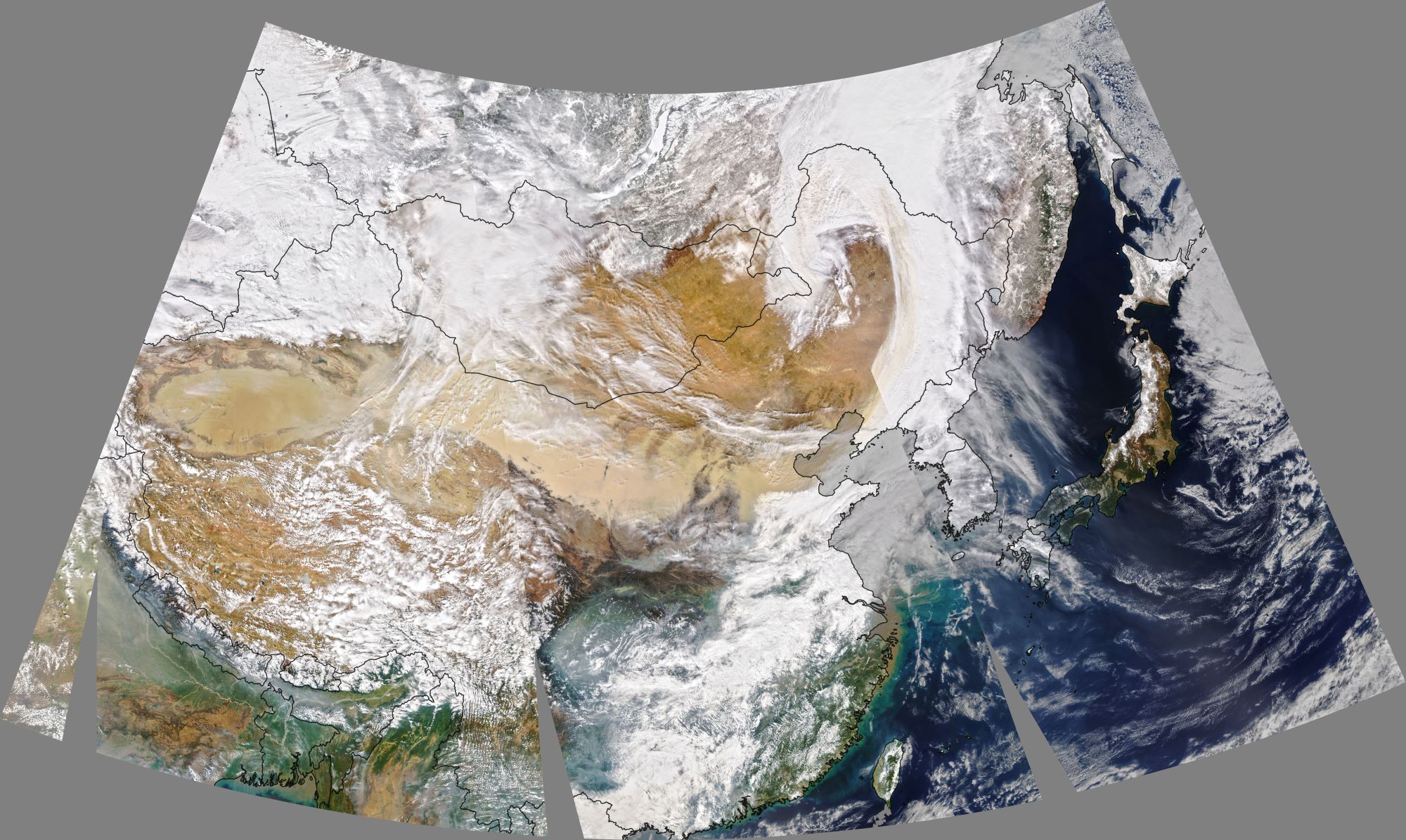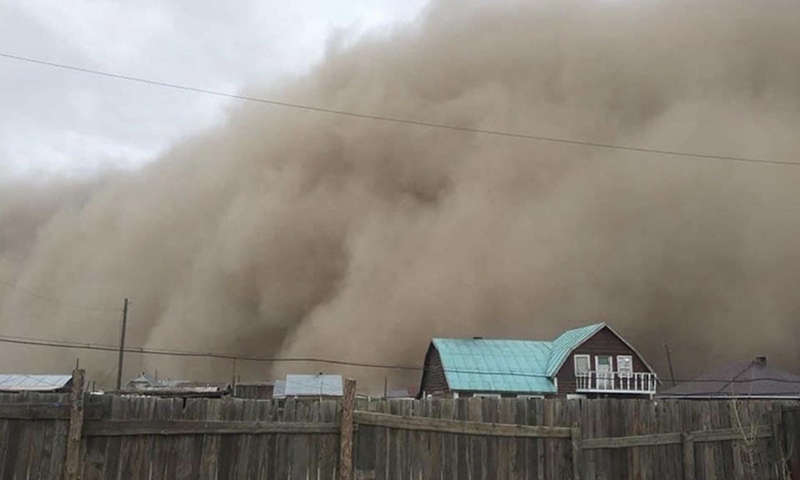[:ja]NASAの地球観測衛星Aquaが撮影した東アジアの黄砂の様子です。モンゴル気象庁によると、2021年3月13~15日にモンゴルの砂漠地帯で最高風速40mの黄砂(砂嵐)が発生しました。

黄砂は、特に中国を中心とした東アジア内陸部の砂漠または乾燥地域の砂塵が、強風を伴う砂塵嵐などによって上空に巻き上げられ、春を中心に東アジアなどの広範囲に飛散し、地上に降り注ぐ気象現象です。気象現象としての黄砂は、砂塵の元になる土壌の状態、砂塵を運ぶ気流など、大地や大気の条件が整うと発生すると考えられています。発生の頻度には季節性があり、春はそういった条件が整いやすいことから頻繁に発生し、比較的遠くまで運ばれる傾向にあります。一方、黄砂が自然環境の中で重要な役割を果たしていることも指摘されています。飛来する黄砂は、洪水による氾濫堆積物や火砕物と並ぶ堆積物の一種であり、土地を肥やす効果がある。また、黄砂には生物の生育に必要なミネラル分も含まれており、陸域だけではなく海域でもプランクトンの生育などに寄与しています。
地上の様子はこちらです。

参考文献: Early Season Dust Storm Hits Beijing (NASA Earth Observatory)
地球俯瞰画像を見る: LiVEARTH
[Earthview Wonders] No.1249: Yellow Dust in East Asia
NASA’s Aqua satellite captured “Yellow Dust” or “Asian Dust” storm in the East Asia. The Central Meteorological Observatory announced that on March 13-15 the combined effects of cold air and cyclones caused the most intense sand storm in the past decade.

Asian Dust (also yellow dust, yellow sand, yellow wind or China dust storms) is a meteorological phenomenon that affects much of East Asia year-round and especially during the spring months. The dust originates in China, the deserts of Mongolia, and Kazakhstan where high-speed surface winds and intense dust storms kick up dense clouds of fine, dry soil particles. These clouds are then carried eastward by prevailing winds and pass over China, North and South Korea, and Japan, as well as parts of the Russian Far East. Sometimes, the airborne particulates are carried much further, in significant concentrations which affect air quality as far east as the U.S.
The local scenery on the ground is as follows.

Reference: Early Season Dust Storm Hits Beijing (NASA Earth Observatory)
See earthview photo gallery: LiVEARTH[:]